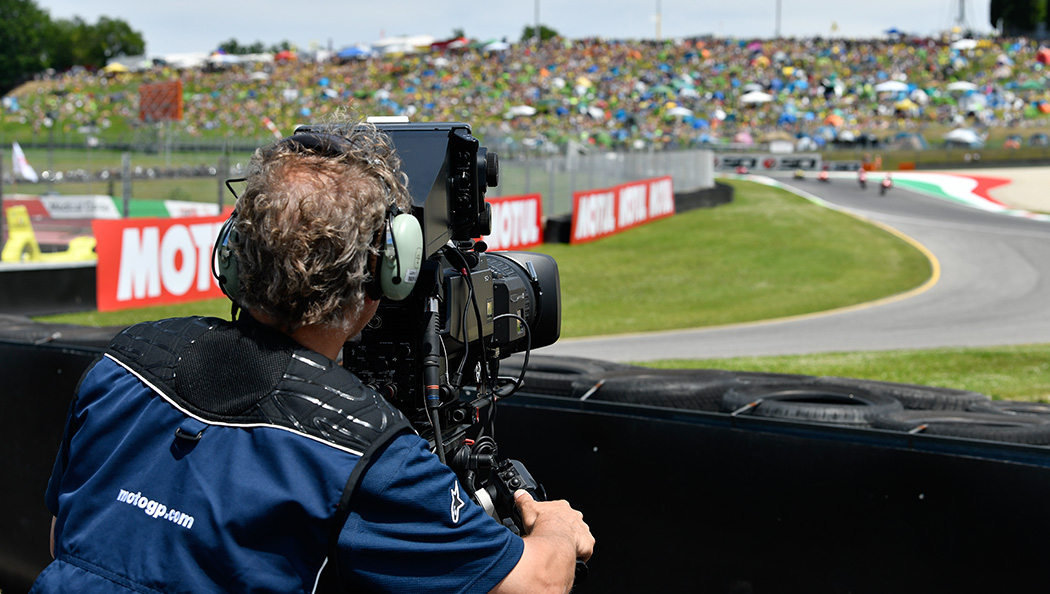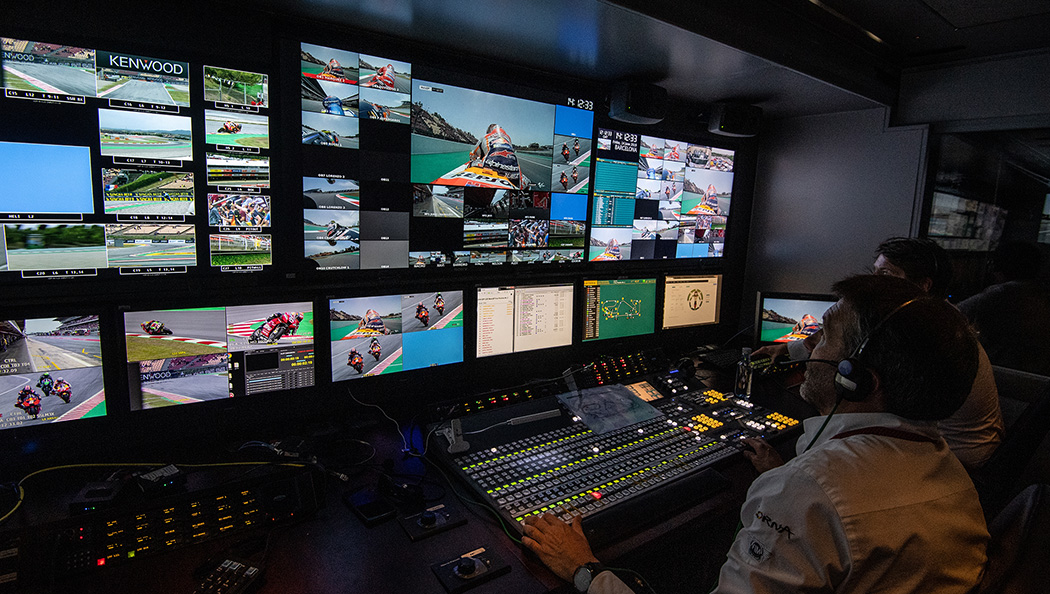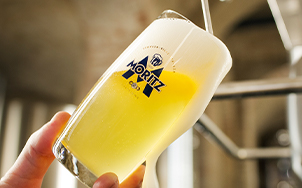How Dorna Sports brings MotoGP™ to the world
Broadcasting a MotoGP™ race is nothing like filming a field-based sport.
Whereas a typical American football field measures 0.1 kilometers lengthwise, a MotoGP track might encompass more five kilometers — the equivalent of more than 50 football fields laid end to end.
Every millisecond on the track counts, not only for the riders but also for the broadcasting teams who tell the story of a race that moves at over 200 mph.
Camera angles pivot from the trackside, to the crowd, up to a bird’s eye view and then back down again — all within seconds. And the fans cannot get enough.
“We work with passion and with the experience of almost 30 years racing together”, declares Manel Arroyo, Managing Director of Dorna Sports.
Dorna has been perfecting the agile art of broadcasting MotoGP races since its founding in 1988. The Madrid-based company now covers more than 60 events and 200 races across 18 countries, which they deliver online and via television to their global audiences. In 2019 alone, coverage of Dorna’s biggest World Championship MotoGP reached hundreds of millions of people. Getting things right is not only important, but often a matter of split seconds.
Similar to MotoGP itself, broadcasting has undergone its own technical transformation. It’s not merely about flashy camera angles anymore. Now, viewers have access to an unprecedented amount of video, from the racetrack to the locker room.
“Social media has changed the way you watch, not only in length, but also in quality.”, says David Arroyo, Digital Director of DORNA, definitively.
FEATURED SOLUTIONS

Smarter Infrastructure Solutions

Smarter Workplace Solutions

End-to-end Services
"Meeting the needs of fans who watch the game from TV or PC is our priority,” said David Arroyo. He continued, “We see ourselves as the link between the drivers and the fans. Our goal is to make ourselves as useful as possible by giving the viewer exactly what they want. For example, if you are a fan of the Ducati team or of Jack Miller (Australian rider for Ducati) we develop specific content so that you can follow your favorite rider and team. How do we do that? Our choices are guided by the analysis of the data we collect .From what we produce to how we produce it, nothing is left to chance or instinct. In a sense we are a real data-driven company."
Dorna Sports needed solid support on the technology front, and in 2019, the company signed on Lenovo as its technical partner. Lenovo’s technology solutions and services are helping the Dorna team streamline their broadcasts and devise fresh innovations to enhance the viewer’s experience in real-time.

Lenovo and Dorna share a lot of values. We both strive for evolution and constant innovation.
— Pau Serracanta, Managing Director, MotoGP
“We use more than 100 high-definition (HD) cameras in every Grand Prix of the calendar,” explains Sergi Sendra, Senior Director of Dorna’s TV Department. These include fixed trackside cameras, a Helicam, multiple handhelds, a super high-speed slow-motion camera, and up to four cameras attached to each bike.
On top of the cameras, Dorna engineers install 60 kilometers of fiber optic cable around the track for each race, which must be removed after every single championship. It’s like running two marathons per race, plus 30 kilometers on top of that.
“We are traveling with more than 350 tons of equipment,” comments Manel Arroyo, who adds “that’s four jumbo planes’ worth!”
The sheer bulk of equipment is perhaps matched only by the incredible amount of data generated during each championship. According to Sendra, every race generates approximately 12 terabytes of heart-racing media, or more than 12,000 gigabytes. For perspective, a typical laptop contains between four and forty gigabytes.
With Lenovo on the roster, innovation in tech meets innovation on the racetrack. Lenovo helps Dorna streamline its day-to-day office operations and to develop even more immersive ways for viewers to experience the company’s impressive array of TV and online shows.

We see ourselves as the link between the drivers and the fans.
With Lenovo’s support, Dorna launched an interactive online service that enables spectators to “edit” videos in real time from a PC, tablet or smartphone. A quick tap on the screen unveils visual add-ons like 360-degree shots of the bike, views from the rider’s perspective and slow motion — viewers can feel like part of the action, even if they’re sitting at home in pajamas.
“Facilitating such advanced, interactive technology requires reliable, durable hardware,” explains Pau Serracanta, Managing Director, MotoGP.
“Lenovo and Dorna share a lot of values,” he explains. “We both strive for evolution year after year and constant innovation.” Plus, Serracanta adds, “Lenovo has consistently stood out in its commitment to the motorsport ecosystem, with its partnership with Ducati Corse in MotoGP and sponsorship of Scuderia Ferrari in Formula 1®”.
Manel Arroyo agrees: “We use Lenovo for almost everything” — and from everywhere. “This is an extremely mobile team. We’re working at home, on the track, in airports. The work we’re doing needs reliable service and power.”
That spirit of rapid iteration and evolution has long been a driving force behind Dorna, which continues to set the pace for excellence in sports broadcasting. In the last decade alone, Dorna switched from satellite to fiber, developed 360-degree angle cameras that stream live from every bike, and — with the help of Lenovo — created smart motion-tracking technology that can attach a graphic to a real-time moving image.
Though they can’t yet reveal what they’re cooking up for the coming seasons, Sendra hinted that whatever they unveil will have interactive, engaging elements that enable the home spectators to further personalize the viewing experience. Whether it's football or racing, personalization, he said, is the next frontier for sports broadcasting.















